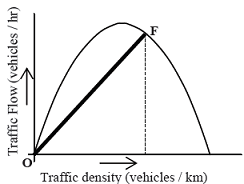GATE 2017-2018 :: GATE Architecture and Planning
- Travel behavior characteristics of an urban area can be derived from
- In GIS, the set of entities representing vector data type is
- A common flowering shrub is
-
The correct arrangement of the height of towers given below in descending order is P. Burj Khalifa, DubaiQ. Petronas Tower, Kuala LumpurR. Taipei 101, TaiwanS. Bank of China Tower, Hong Kong
-
Match the buildings in Group I with their corresponding architects in Group II

- The term 'Working head' in context of water supply system means
-
In a theoretical traffic flow relationship, as shown in the figure given below, the slope of line OF joining point F on the curve and the origin O represents

-
Match the CAD terms in Group I with their corresponding functions in Group II

-
Match the historic periods in Group I with their corresponding examples of towns in Group II

-
Match the components of an Indian urban land use map in Group I with their corresponding colour codes as per UDPFI guidelines in Group II

|
A.
Height of a body of water falling freely under the force of gravity to acquire a certain velocity
|
|
B.
Rate of increase of velocity with respect to distance normal to the direction of flow
|
|
C.
Total head with deduction for velocity head or losses
|
|
D.
Difference between supply and delivery water levels
|


 Whatsapp
Whatsapp
 Facebook
Facebook

